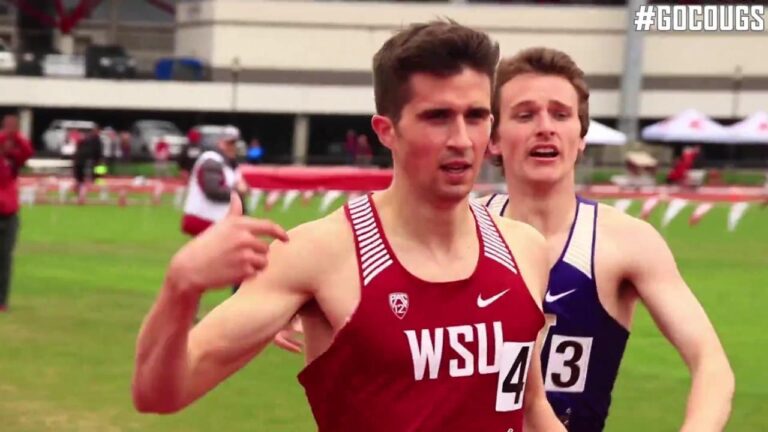Washington State Athletics Announces Extensive Restructuring of Track & Field Program
Washington State University has revealed a major overhaul of its Track & Field program, aiming to streamline operations amid tightening budgets and a strategic shift in athletic priorities. This restructuring involves scaling back event offerings, reducing scholarship allocations, and reorganizing coaching staff to better align with the university’s long-term vision for competitive success and fiscal responsibility.
The key modifications include:
- Discontinuation of Specific Events: The program will phase out select long-distance races and certain field disciplines to concentrate resources on events with stronger competitive prospects.
- Scholarship Reductions: A cutback of approximately 30% in scholarship funding is expected to affect recruitment dynamics and team depth.
- Coaching Staff Downsizing: The number of full-time coaches will decrease from eight to five, with roles redefined to support the new program focus.
| Aspect | Previous Setup | Revised Setup |
|---|---|---|
| Track Events | Comprehensive range including sprints, middle, and long-distance | Concentrated on sprints and hurdles |
| Field Events | Wide variety including throws and jumps | Restricted to jumping events only |
| Scholarships | Fully funded | Reduced by 30% |
| Coaching Staff | 8 full-time coaches | 5 full-time coaches |
Consequences for Athletes and Coaching Personnel
The announcement has generated considerable concern among Washington State’s student-athletes and coaching staff. Athletes are now facing uncertainty regarding their scholarships and the possibility of transferring to other institutions to continue their athletic and academic pursuits. This disruption not only affects their sports careers but also poses challenges to their academic progress and mental health.
Coaches are similarly impacted, confronting job insecurity and the need to explore new career opportunities or relocations. While the university has committed to offering support services, the transition period remains difficult for all involved.
- Student-Athletes: Scholarship evaluations, transfer considerations, academic planning adjustments
- Coaching Staff: Employment uncertainty, career counseling, potential relocation assistance
- Support Services: Mental health counseling, academic advising, transfer facilitation
| Group | Primary Concern | University Assistance |
|---|---|---|
| Student-Athletes | Maintaining scholarship funding, exploring transfer options | Academic support, psychological counseling |
| Coaches | Job security, career transition support | Professional placement services |
Reactions from Alumni, Community, and Current Athletes
The decision has sparked a wave of reactions across the Washington State athletics community. Alumni, many of whom attribute their personal and professional growth to the Track & Field program, have voiced disappointment and a sense of betrayal. Social media channels have become platforms for expressing concerns about losing a vital element of Cougar athletics heritage, with calls for greater transparency and avenues to support displaced athletes.
Current athletes and local supporters have rallied to address the immediate challenges posed by scholarship uncertainties and training disruptions, while also emphasizing the importance of preserving the program’s legacy within the community. Key themes emerging from these discussions over the past few days include:
- Alumni Concerns: Potential erosion of networking opportunities and career pathways linked to the program’s closure.
- Community Unity: Initiatives to raise funds and advocate for the retention of critical program components.
- Athlete Support: Focus on transfer guidance and mental health resources for affected athletes.
| Group | Primary Issue | Response Actions |
|---|---|---|
| Alumni | Loss of tradition and identity | Petitions and advocacy campaigns |
| Current Athletes | Uncertainty over scholarships | Consultations with coaches and advisors |
| Community Supporters | Preserving program heritage | Organizing local fundraising events |
Strategies to Support Affected Individuals and Minimize Negative Impacts
To mitigate the repercussions of these program reductions, Washington State Athletics should emphasize open and ongoing communication with all parties involved, including athletes, coaches, alumni, and community members. Implementing robust support systems is essential to help those impacted navigate academic, athletic, and career transitions smoothly. Partnering with regional athletic clubs and organizations can also provide displaced athletes with alternative platforms for training and competition.
Recommended support initiatives include:
- Developing a scholarship extension plan to ensure current athletes maintain financial support through their eligibility.
- Providing specialized mental health services tailored to the stress of sudden program changes.
- Launching mentorship programs that connect former athletes and coaches with those affected.
- Engaging local businesses and sponsors to fund supplementary training opportunities and events.
| Support Focus | Proposed Action | Anticipated Benefit |
|---|---|---|
| Scholarship Continuity | Maintain funding for current athletes | Financial security during transition |
| Mental Health & Career Counseling | Offer dedicated support services | Enhanced well-being and smoother career shifts |
| Community Collaboration | Partner with local clubs and sponsors | Preservation of competitive opportunities |
Conclusion: Washington State Athletics Faces a Critical Juncture
The recent announcement to downsize the Track & Field program represents a transformative moment for Washington State University’s athletic department. As the institution grapples with financial realities and strategic realignment, the ripple effects on athletes, coaches, and the wider collegiate track and field community are profound. Observers and stakeholders alike will be monitoring how these changes influence Washington State’s competitive edge, recruitment efforts, and overall athletic identity in the coming years.







